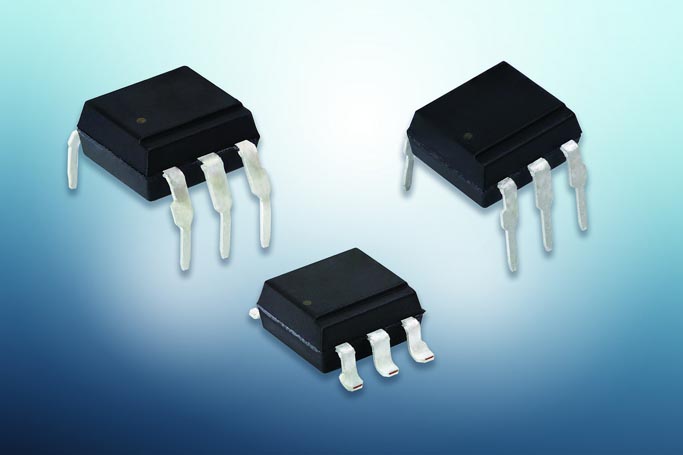For Home Appliances and Industrial Equipment, Space-Saving Devices Offer 800 V Off-State Voltage in DIP-6 and SMD-6 Packages
Vishay Intertechnology broadened its optoelectronics portfolio with the release of two new series of optocouplers with phototriac output in compact DIP-6 and SMD-6 packages. Offering high off-state voltage of 800 V and static dV/dt of 1000 V/μs, the Vishay Semiconductors VOT8026A and VOT8123A deliver high robustness and noise isolation for home appliances and industrial equipment.

The optocouplers announced isolate low voltage logic from 120 VAC, 240 VAC, and 380 VAC lines to control resistive, inductive, or capacitive loads, including motors, solenoids, high current thyristors, or TRIACs and relays. Reducing design costs and saving board space, the devices consist of a GaAs infrared LED optically coupled to either a zero-crossing TRIAC (VOT8026A) for EMI reduction without the need for external snubber networks, or a random-phase TRIAC (VOT8123A) to enable phase-independent switching.
The high off-state voltage of the VOT8026A and VOT8123A enhances safety margins in one-phase applications, while still maintaining enough voltage headroom for three-phase applications. For additional safety, the optocouplers offer a withstanding isolation voltage of at least 5000 VRMS. Low trigger currents of 5 mA for the VOT8026A and 10 mA for the VOT8123A facilitate an easy interface with digital logic.
Typical applications for the RoHS-compliant optocouplers include power TRIAC drivers in solid-state relays, three-phase air conditioners, boilers, thermostats, industrial motor control and power line switching, and motor, lamp, and valve control in household appliances.
Product Options Table:
| Series | Package version | Device number |
| VOT8026A (zero crossing) |
DIP-6 | VOT8026AD |
| DIP-6, 400 mil | VOT8026AG | |
| SMD-6 | VOT8026AB | |
| VOT8123A (non-zero crossing) |
DIP-6 | VOT8123AD |
| DIP-6, 400 mil | VOT8123AG | |
| SMD-6 | VOT8123AB |
Samples and production quantities of the VOT8026A and VOT8123A are available now, with lead times of six weeks.
